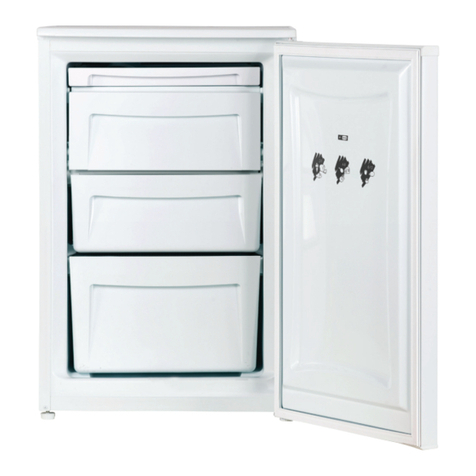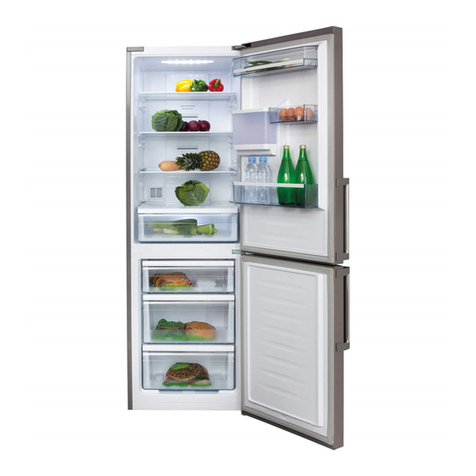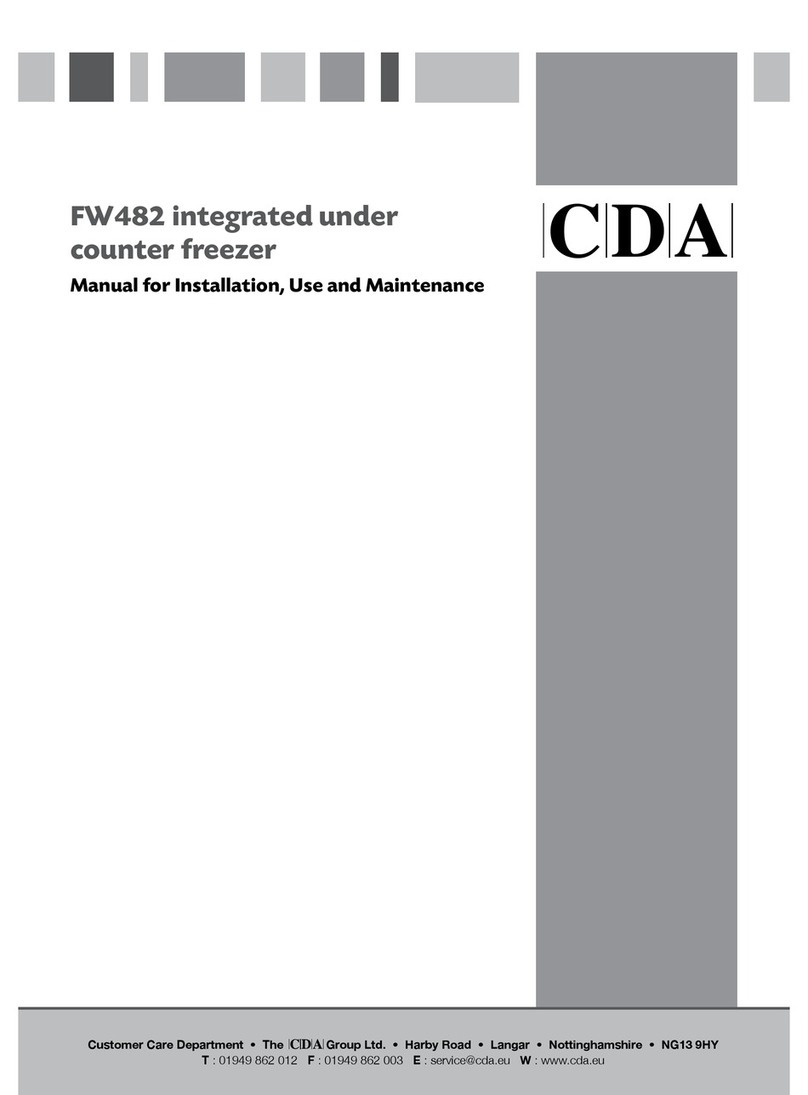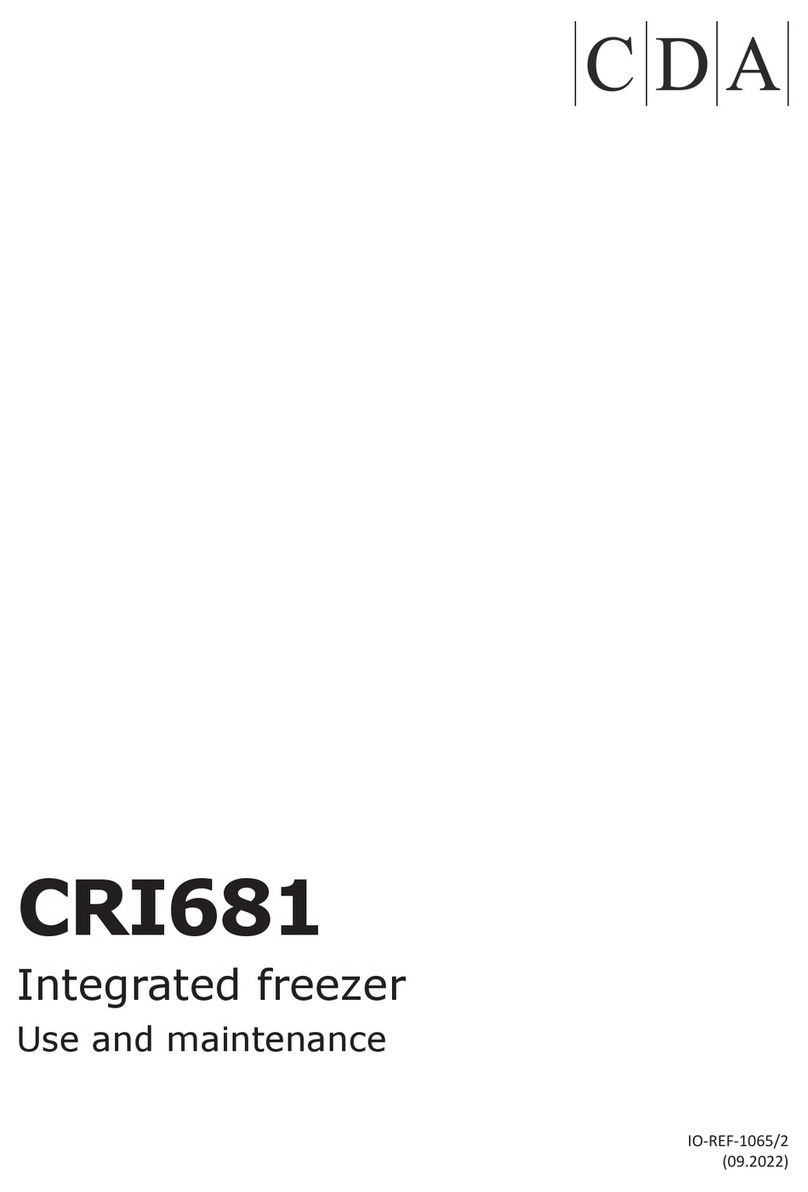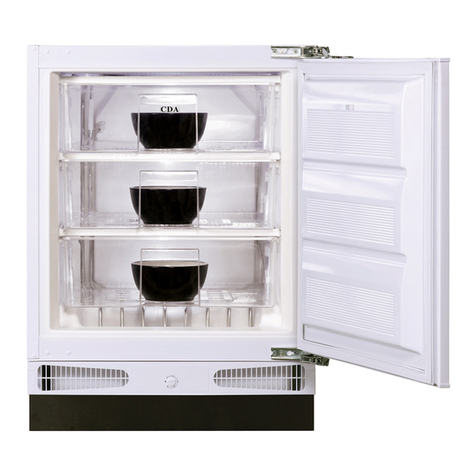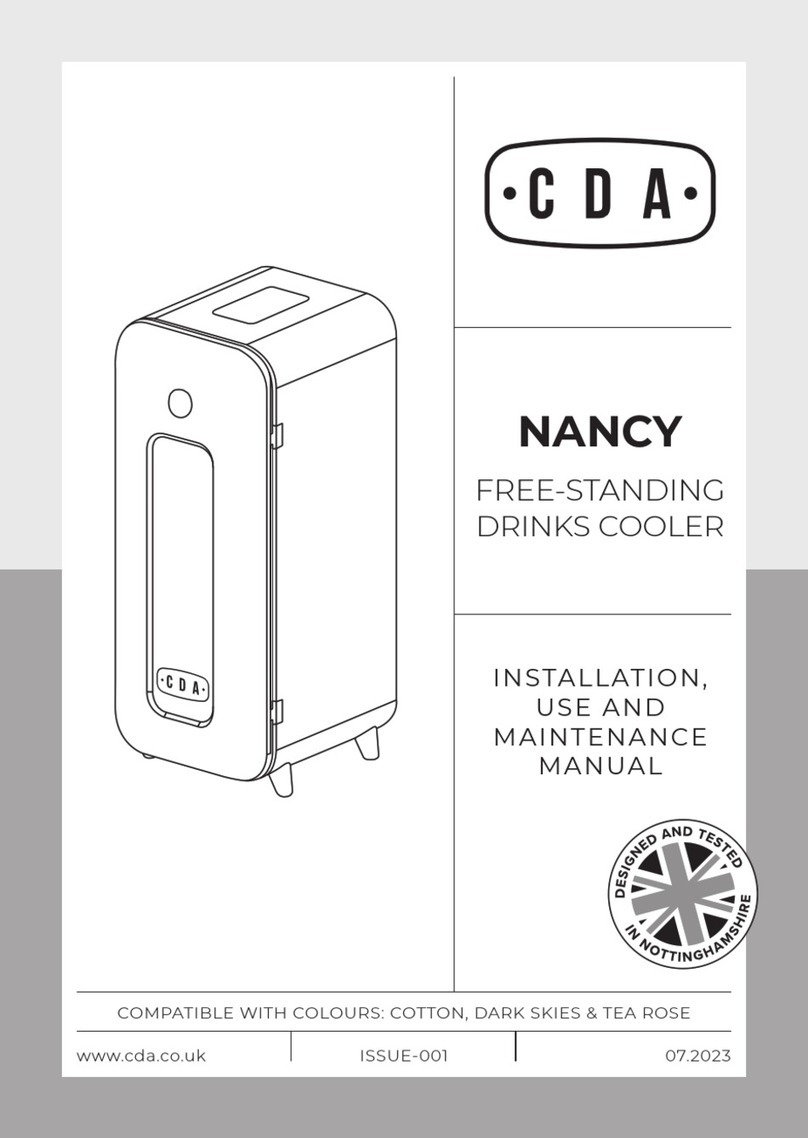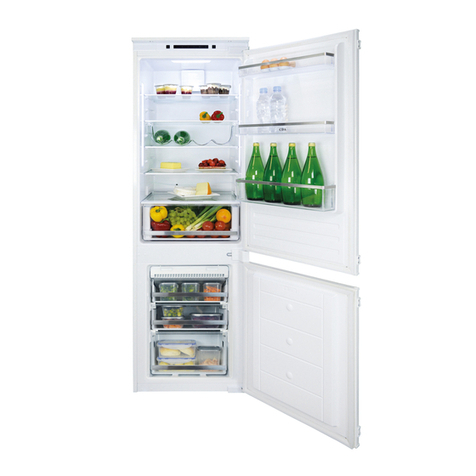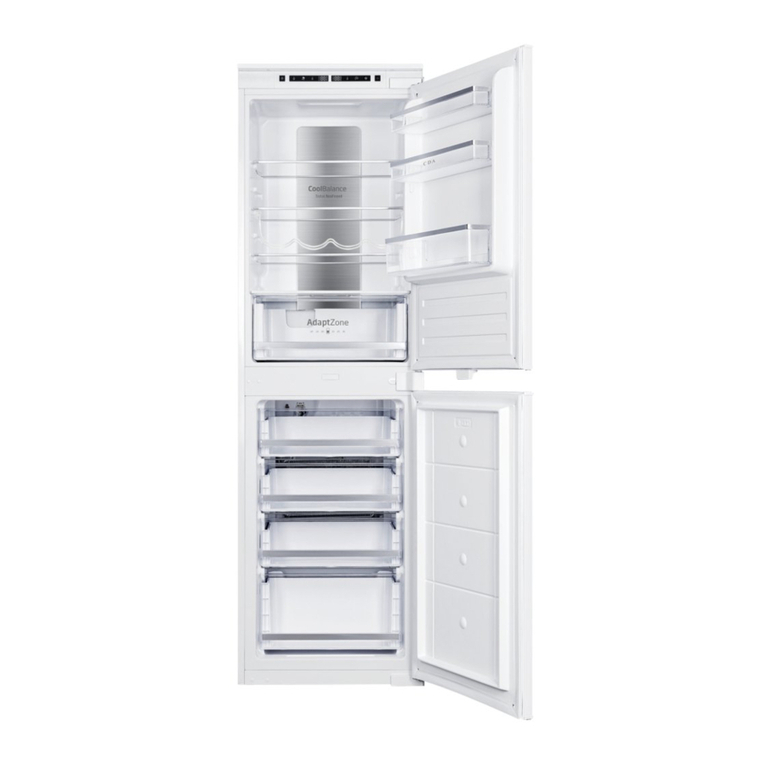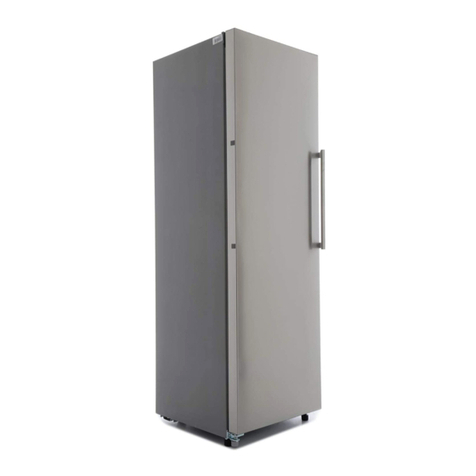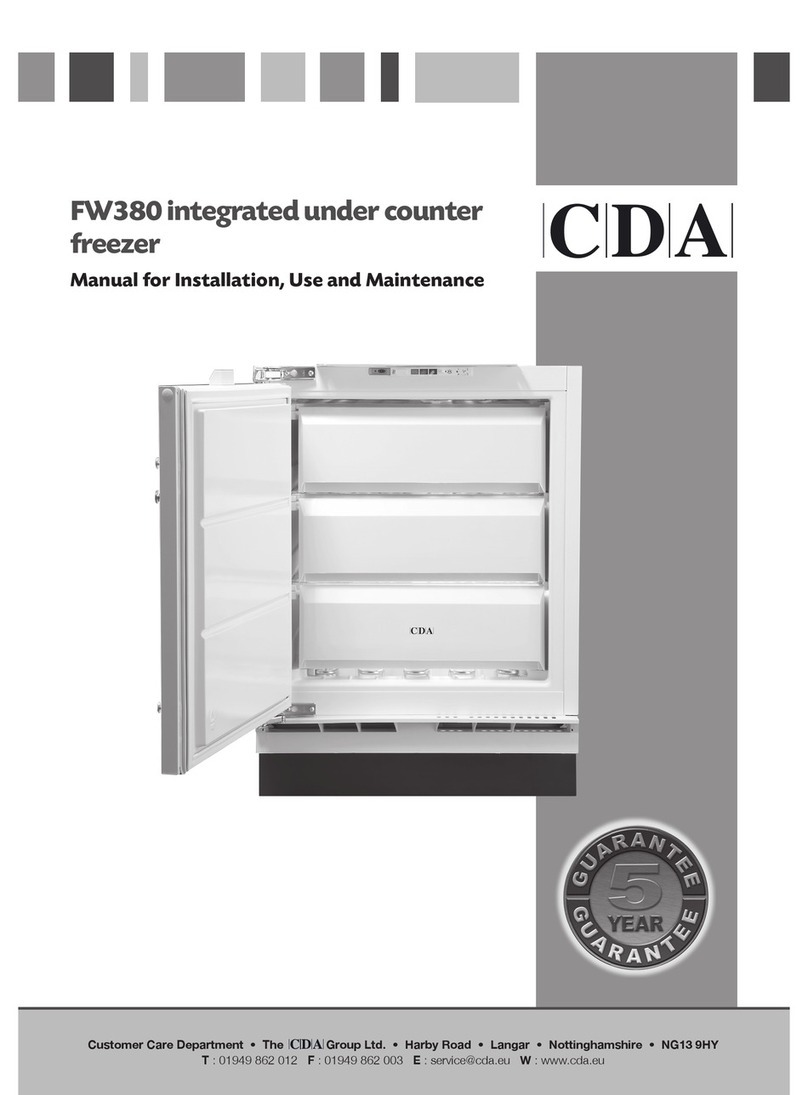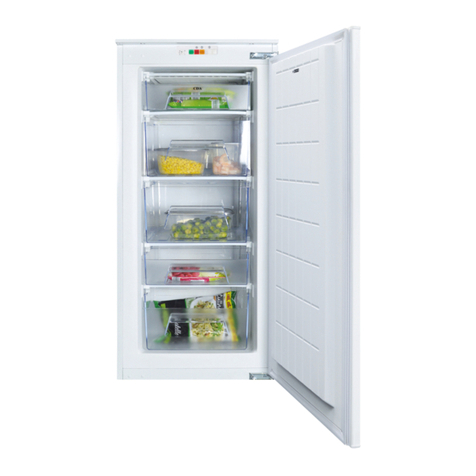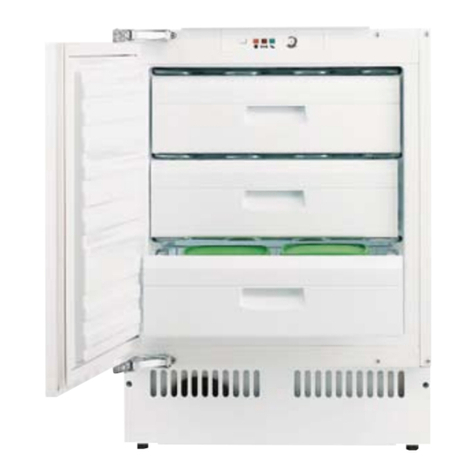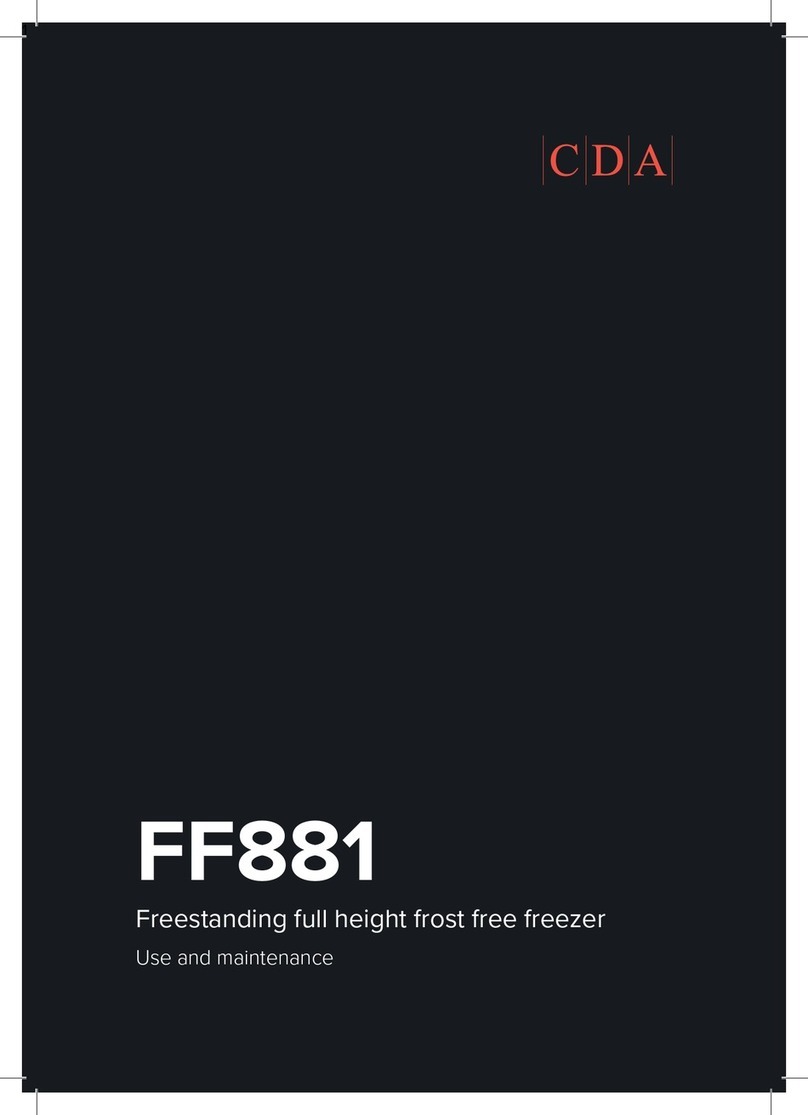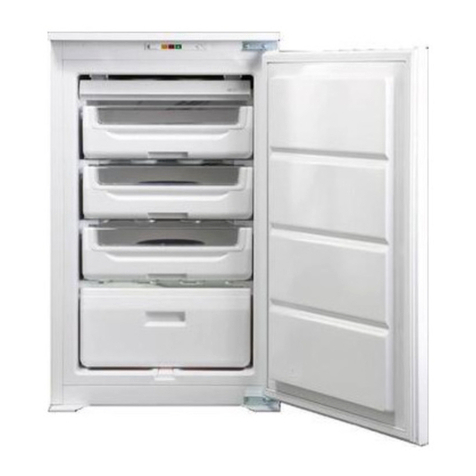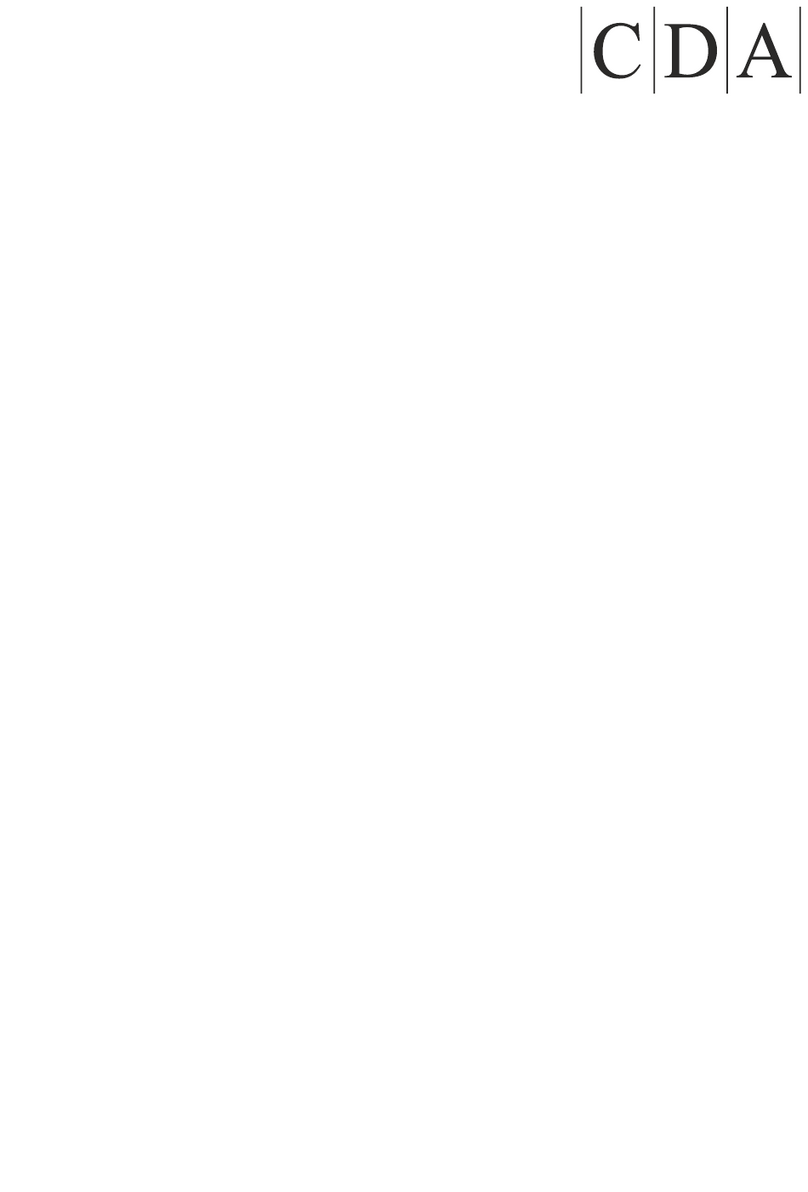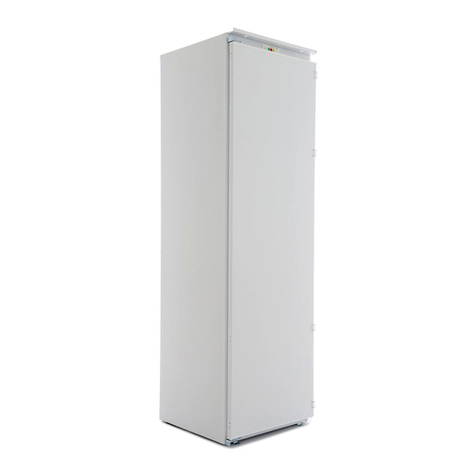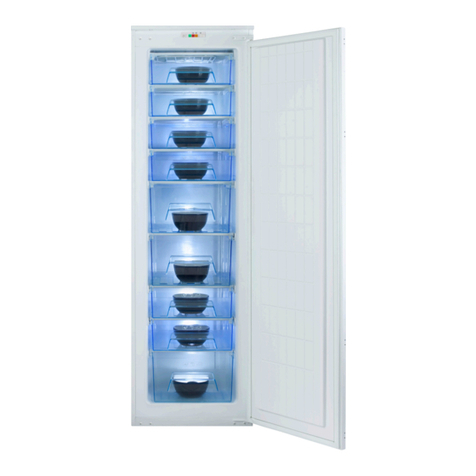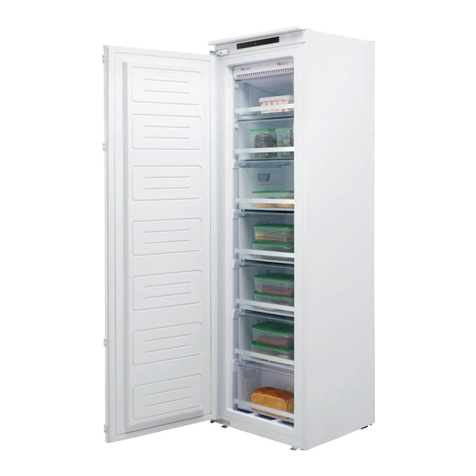
7
General notes on use
Freezer
• Never touch or the lick the sides of the freezer, especially with wet
hands.
• Never put hot foods in the refrigerator. Warm food should be
allowed to cool to room temperature before being put into the
freezer.
• Follow the instructions on the food packaging for storage of frozen
food. If no information is provided, foods should not be stored for more
than three months after use.
• Store food in small packages (ideally less than 2.5 kg). This reduces the
freezing time and improves the quality of the food after thawing.
• Wrap or cover food before putting into the freezer. To stop the
wrapping sticking together, ensure it is dry first.
• Label the food before freezing with information including type of
food and dates of storage and expiry.
• Once food is thawed, it must not be refrozen unless it has been
completely cooked. Only defrost as much food as is required to
prevent wastage.
• Bottled or canned drinks should not be stored in the freezer
compartment as they may explode.
• Only open the door for as long as is necessary. Leaving the
door open for long periods will aect the temperature inside the
appliance and waste energy.
• Ensure all compartments are fully closed after use.
• Take care with food (such as ice cream or lollies) taken and eaten
straight from the freezer. They can still be extremely cold and can
cause your skin, lips or tongue to stick to them. If this does happen,
run the aected area under warm (but not hot) water.

